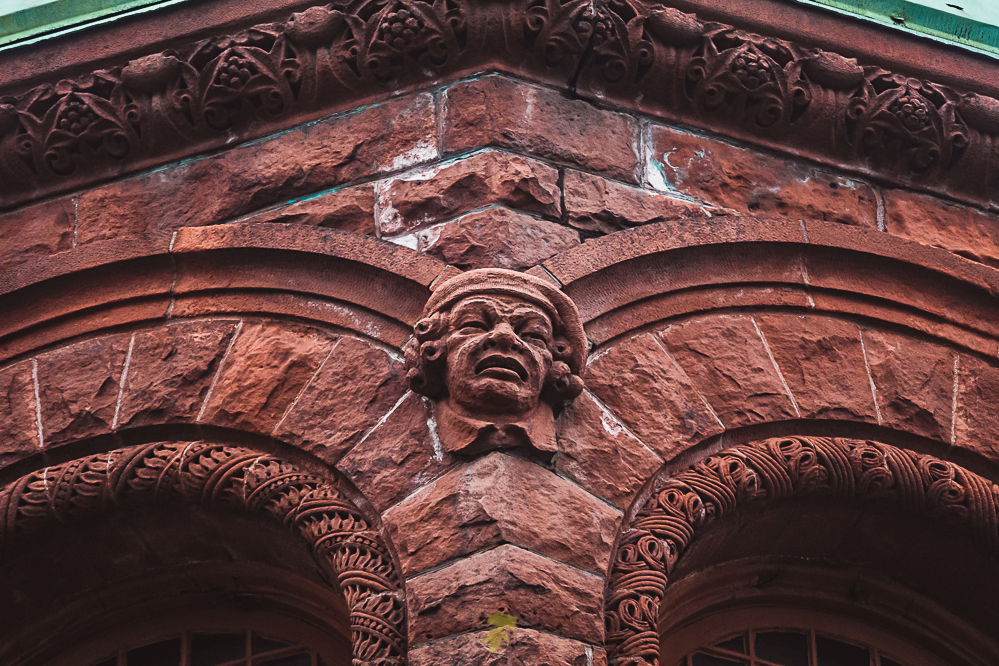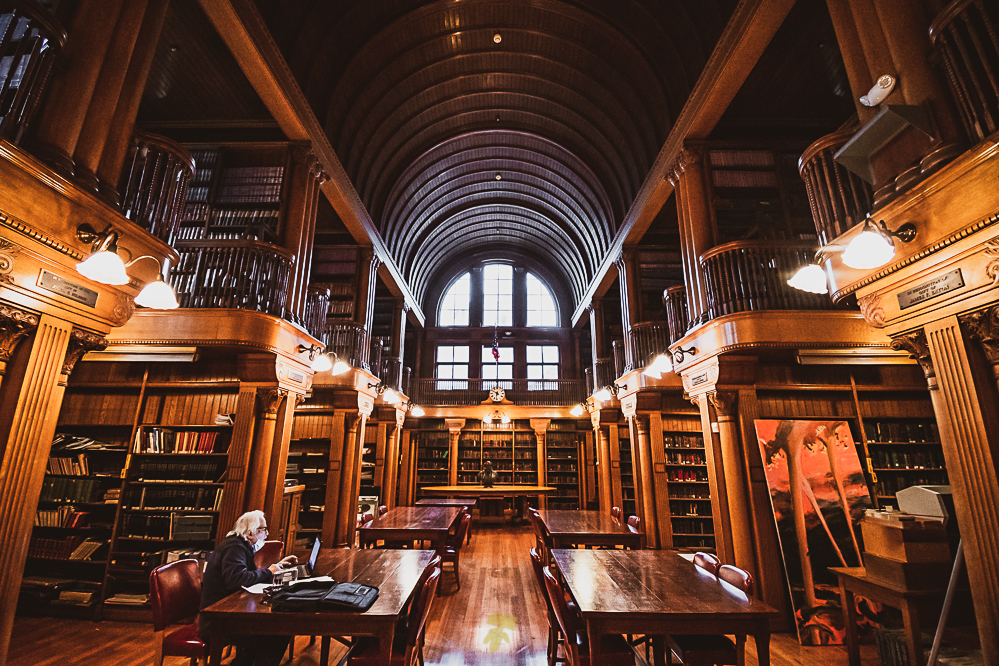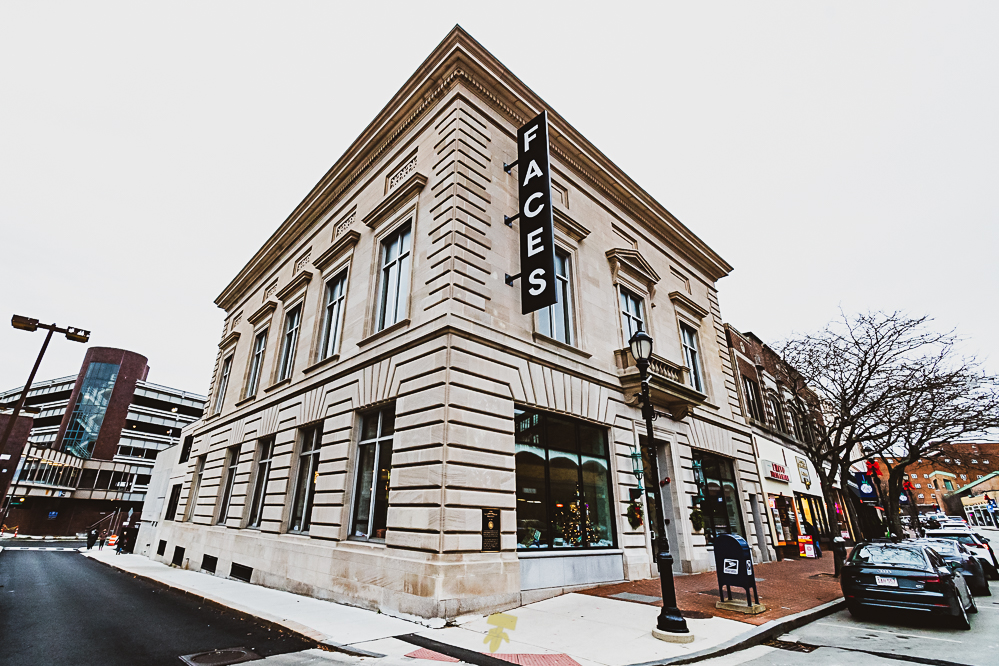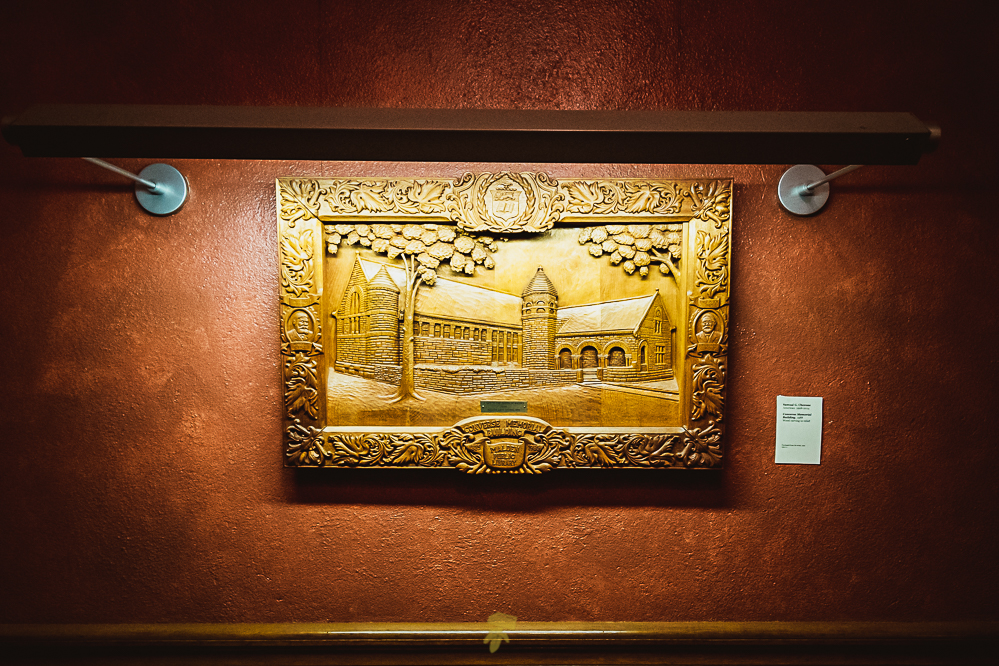
Kind of looks like Anne Ramsey. You know, Mama Fratelli from the Goonies.
I went to my local library to visit the “old” section, the Converse Memorial Building, which housed the Malden Public Library from 1885 to 1996. Therein lies a multiple-room museum with glorious paintings, sculptures, and artifacts, featuring works by John Day, Gale Fulton Ross, Frank Stella (and his mother Constance), Darius Cobb, among others.
It was built in 1885 by architect Henry H. Richardson, known for his style of Romanesque Revival architecture which incorporates 11th and 12th century southern French, Spanish, and Italian Romanesque characteristics. Richardson is most known for the Trinity Church (Boston), Thomas Crane Public Library (Quincy), Richardson Olmsted Complex (Buffalo), and the John J. Glessner House (Chicago).
While the sandstone building itself is quite enchanting if you give a good look as it features animal and human-esque sculptures embedded into the structure, the former library has a bit of an intriguing backstory. It was built in honor of the son of the first mayor of Malden, who was the sole victim in the first bank robbery that included a murder in North America.

Upon entering the museum, you’ll notice a cozy and intimate room to the right, this is the main library room. With high vaulted ceilings giving way to two floors of curving bookcases that features elaborately carved white oak and fascinating craftmanship and woodwork. This room was the main library when I was a young lad, now it’s closed to the public as it is now home to old book collections and city records. To the left is the entrance to the museum, where, as you walk in, you will see three large portraits. In the middle is Frank Converse, with his father Elisha to the left and mother Mary on the right. All three were painted by Maldonian Albion Bicknell.
Elisha Slade Converse, a tradesman and businessman since the age of 19, would go on to be the acclaimed first mayor of the newly incorporated city of Malden. While he was born in Needham, he grew up in Woodstock, Connecticut, until returning to Boston at the age 24 to open a shoe and leather company in 1844. Elisha had married a captain’s daughter, Mary D. Edmands, the year prior, and they would have their first son, Frank Eugene Converse, in 1846. With the success of his ventures, the family moved to Malden in 1850.

Main library room.
Elisha continued his success becoming one of the founders and directors of Malden Bank, just a year after relocating to the newly established city, eventually serving as its president for over 30 years. The bank would later be reorganized as the First National Bank of Malden. He would also hold high positions in several other companies and banks around the local area and would open the Boston Rubber Shoe Company in Malden. It became one of the largest rubber manufacturers in the United States. Elisha would later be elected as the first mayor of Malden in 1881 after serving two years in both the state senate and the house of representatives.
 Frank worked as a teller at the First National Bank of Malden. He would be shot to death by Edward Green, the city’s postmaster, as he robbed the bank. Frank was 17. Green, in heavy debt and with a drinking problem, entered the bank just before noon on December 18, 1863 with his six-shooter knowing Frank was alone having been there earlier in the morning complaining about a torn bill. As the story goes, Green shot Frank in the head from point-blank range then stealing $5,000 from the safe. That would be approximately $165,000 today. A few months prior to this, Green had set fire to the building next to the post office in hopes it would spread over, relieving him of his worries and troubles. At the time it was the postmaster who had shared responsibilities as a procurement officer would have nowadays, but to Green’s dismay, kept bad books.
Frank worked as a teller at the First National Bank of Malden. He would be shot to death by Edward Green, the city’s postmaster, as he robbed the bank. Frank was 17. Green, in heavy debt and with a drinking problem, entered the bank just before noon on December 18, 1863 with his six-shooter knowing Frank was alone having been there earlier in the morning complaining about a torn bill. As the story goes, Green shot Frank in the head from point-blank range then stealing $5,000 from the safe. That would be approximately $165,000 today. A few months prior to this, Green had set fire to the building next to the post office in hopes it would spread over, relieving him of his worries and troubles. At the time it was the postmaster who had shared responsibilities as a procurement officer would have nowadays, but to Green’s dismay, kept bad books.

Part of a vault door that is now a private meeting room inside the brewery.
The case went unsolved for a short time as there were no witnesses inside the bank. It was said that only the clock hanging on the wall behind the teller desk was the only thing that saw what transpired. That very clock hangs by the entrance to the museum inside the Converse Memorial Building. Roughly seven weeks later, Green was arrested. Nobody suspected him until the community noticed he was paying off his debts with no explanation of where the money was coming from. He cracked, confessing to the police during questioning and even offered the location of where the unspent money was kept, the attic of the local volunteer fire house in an old boot. For the horrendous incident, Edward Green was put to death at the Middlesex County Jail on April 13, 1866, becoming America’s first armed bank robber to be hanged.

The former location of the First National Bank of Malden.
The site of the First National Bank of Malden, 48-50 Pleasant Street, is now a restaurant and brewery called Faces. If you are familiar with Cambridge, then you may recognize the name as it was a disco nightclub from the 1970s-1990. The Martignetti family ran the club in Cambridge, with the next generation of family now operating the new Faces in Malden.
Inside, remnants of the bank remain, though the interior has gone through several rebuilds and alterations. Updated vault doors still remain intact and are swung wide open to reveal rooms for private meetings or for leisure. The brewery offers an array of beer from crispy lagers to popular New England-style IPAs as well as more fun offerings like a blonde stout made with coconut, coffee, vanilla, and chocolate and fruited kettle sours. They also have a full bar to accompany their gastropub-inspired fare.
Did I mention that Marquis Mills Converse (Elisha’s cousin) worked as a manager for the rubber manufacturing operation until he opened his own, the Converse Rubber Shoe Company, in February 1908? You know, the sneaker company responsible for the Chuck Taylor All Star brand.




